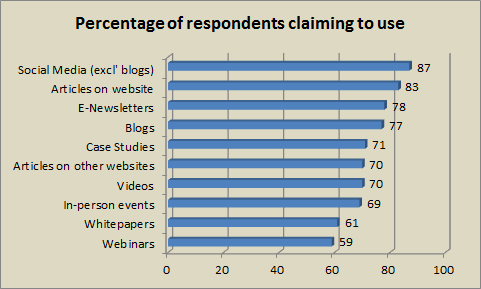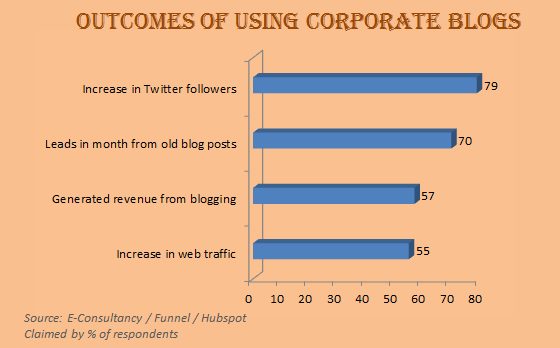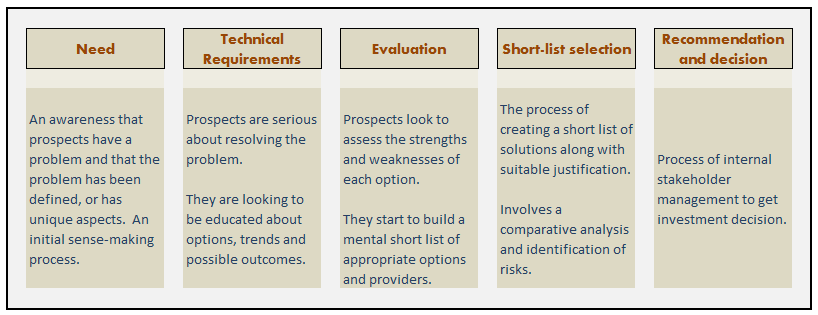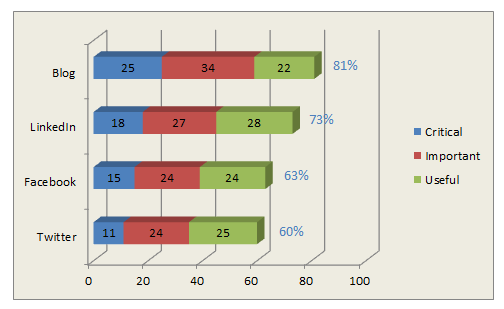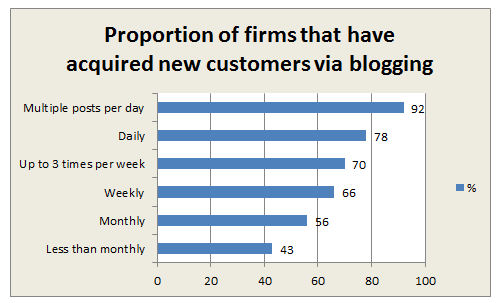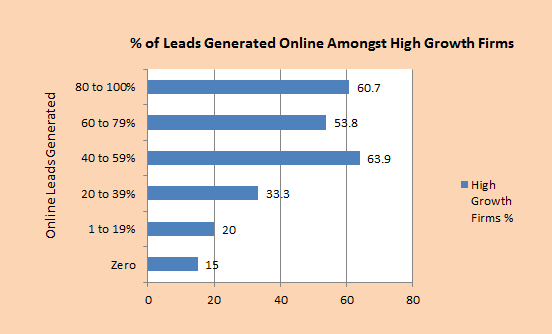A survey has highlighted eight major challenges facing marketing teams. SME’s need to acquire new skills to overcome these challenges and succeed in today’s climate.
Recent research by Forrester Consulting, commissioned by Act-On Software (see details below) asked SME marketing decision makers what they felt were their biggest challenges. The response is illustrated in Table 1 below.
Whilst the research identified responses from SME’s considered “successful” relative to those less successful, the differences between the two groups were broadly similar. They are represented in the table below as an average from all SME’s in the research.
Table 1: Biggest marketing challenges for SME marketing decision makers:
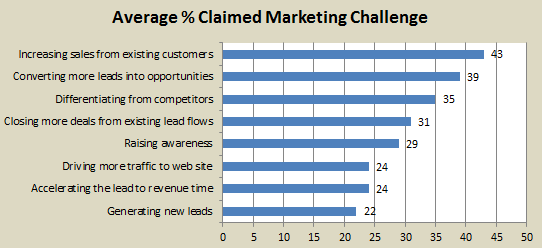
So what can SME marketing decision makers faced with these challenges do to overcome them? A few thoughts on each follow. Whilst not exhaustive, hopefully SME’s can take something from these comments to move things forward in their business.
Increasing sales from existing customers:
Assuming SME’s already have strong relationships with existing customers then the task facing them is to maintain visibility with key stakeholders and continue to build credibility whilst keeping an ear to the ground for any new order opportunities. Personal networking is a proven technique here but SME’s may be limited in terms of the number of contacts they can effectively network with.
Another option is new media. Being visible on relevant digital and social media platforms can indicate to customers that your business is keeping up-to-date with the changes in the business communications landscape – a perception that might then extend to the rest of your business. That’s a positive, as few customers will remain loyal to suppliers they consider slow to adapt in the current economic environment.
Of course, being visible on social platforms means producing effective content in sufficient quantity. It’s an opportunity to demonstrate understanding of industry issues and be seen as an organisation with high industry competence. Owners of SME’s must task their marketing teams to develop editorial programmes, then create and distribute this content. It can be a very cost effective way to be top of mind with existing customer contacts when they are ready to place new orders.
Converting more leads into opportunities:
Usually, the problem here is that the enquiries or leads generated are not yet ready to buy. That’s always going to be the case. Depending on the demand generation tactic used to produce the lead in the first place, a firm could have hundreds of names to sift through to identify what’s about to turn “hot” , what needs to be kept warm and what is of no value.
This can be addressed in a number of ways. Firstly, make sure that the leads generated are of useful quality right from the outset. Rather have fewer quality leads than masses of poor quality names – it’s faster to identify and work upon those that will generate business and means staff will be more productive.
Once you have enquiries of reasonable quality, it’s a case of building a dialogue with each one, providing them with relevant information depending on where they are in the buying cycle and tracking subsequent behaviour. Lead scoring plays a role as can marketing automation in sophisticated environments.
Clearly the right content needs to be in place at all stages of the process. Each item of content should be designed to dovetail with the sales process, to get to BANT qualification stage and, consequently, a sales opportunity that can be forecast.
Differentiating from the competition:
This is often a problem for SME’s. Resolving it requires something of a strategic review, taking an objective assessment of competitor’s strengths and weaknesses, value chain and industry trends. The trick is to emphasize a strength that has perceived value to customers – ideally one that competitors would find hard to replicate. This usually manifests itself around the area of service, skills / competence, or experience.
Once the strength has been identified, all sales and marketing materials should be aligned to emphasize the advantage to existing and prospective customers. Here again, carefully crafted content needs to be developed and distributed using the media channels most appropriate to your audience.
Closing more deals from existing leads flows / Accelerating the lead to revenue time:
This is linked to “Converting more leads into opportunities” above. It’s all about improving lead management performance. Perhaps here we are more concerned about opportunity management.
One of the reasons closure rates may be poor is because the sales people involved are spending too much time trying to nurture “leads” that are not yet ready to buy. Lead nurturing and scoring activities should be implemented by your marketing or inside sales team to deliver qualified leads to sales staff. These should be leads that meet an agreed, pre-opportunity standard.
This will do a couple of transformational things to your business. First, sales staff will be focussed on converting a smaller number of qualified leads, which will tend to automatically improve the conversion metric (it’s from a lower base).
The second consequence is that, for your marketing or inside sales team to provide the volume of qualified leads to sales, they will become more focussed and expert in filling the funnel with higher quality enquiries in the first place and then developing the most effective nurture activities. Use external support to fill any gaps in knowledge, skills or expertise until you have this well-honed.
Raising awareness:
This is often a problem for SME’s because it can mean high expenditure. Exhibitions, advertising, direct mail, teleprospecting can all provide excellent results but the cost can be crippling.
New digital and social media channels offer a realistic alternative. Indeed evidence from the Forrester Consulting report suggests some 50% of SME’s have tried digital and social media awareness tactics and found them to be successful (see here for more details).
However, here again the SME marketing team needs to be flat out creating carefully crafted content in sufficient quantity to not only increase recency and frequency of visibility, but also to ensure the content is engaging. It needs to present the SME’s differential advantage as well as keep prospects coming back or “following” for future content releases.
Driving more traffic to web site:
This is a big subject! Apart from the obvious SEO activities and including web details in outbound email addresses and printed literature, prospects need to be stimulated to visit your site.
Blogs, newsletters and PR articles should all point back to specific landing pages on your site. The trick is to know what content to put into your blog, newsletter or press release in the first place.
It can be opportunistic: a new customer win or contract deployment, or maybe a new product introduction. Some content can be planned, perhaps a piece of commissioned research or a whitepaper on an emerging industry trend. The planned material should also allow you multiple opportunities to distribute and communicate with your audience, especially using social media channels.
Any content a prospect is likely to find valuable should be hosted on designated landing pages on your web site and all outbound communications and content must be created with this in mind. Material appearing on social platforms should have share buttons enabled too.
Generating new leads:
To some extent this heading has been addressed by much of the above. The importance of effective and appropriate content creation cannot be overstated. So, perhaps here we should mention the demand creation vehicles.
Understandably, SME’s tend to rely on the tried and tested traditional mechanisms to generate leads: exhibitions and events, advertising, PR, email and direct mail. Increasingly they are adopting new digital and social media platforms too. When they do, they tend to use the following content types:
- Case studies and testimonials
- Videos
- Whitepapers
- Webinars
- Research reports
This is based on research conducted by MarketingProfs and the Content Marketing Institute entitled “B2B Content Marketing: 2012 Benchmarks, Budgets, and Trends—North America” .
This report also noted the emerging trend of using infographics and e-books too.
Implications for SME’s:
The marketing challenges cited by SME’s are all surmountable. The issues typically involve finding sufficient time, budget and human resources to do the job well. In many ways it requires changing the way you and your team work.
Owners of small and medium sized businesses will need to ensure their marketing teams acquire the skills required to succeed in a digital and social world. That’s in addition to what they do now. Another option is to use external content providers to help build an initial content campaign and help transfer skills to the internal teams at the same time.
Acquiring the content marketing skills for today’s changing business environment has become another priority for owners of SME’s. Those quick to adapt are likely to secure an advantage over the rest.
::::::::::::::::::::::::::::::::::::::::::::
(Source of data : “Driving SMB Revenue in a Tough Economy”, conducted by Forrester Consulting, commissioned by Act-On Software (download the full report from the Act-On site). Sample: 208 SMB marketing decision makers based in North America. An online survey conducted between August and September 2012).
::::::::::::::::::::::::::::::::::::::::::::::::::::::::::::::
Part-time content marketing and lead generation support services for SME’s
Freelance content creation support for busy marketing professionals



